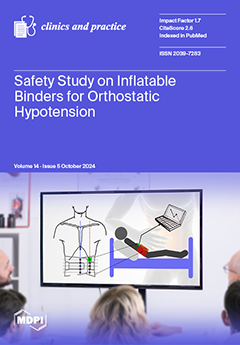Background: This study investigates the association between depression and ischemic heart disease (IHD), conditions that often coexist and complicate patient management. Understanding the impact of demographic factors, risk factors, symptoms, and medical approaches in these patients is essential to develop effective clinical strategies.
[...] Read more.
Background: This study investigates the association between depression and ischemic heart disease (IHD), conditions that often coexist and complicate patient management. Understanding the impact of demographic factors, risk factors, symptoms, and medical approaches in these patients is essential to develop effective clinical strategies.
Objectives: The aim of this study is to investigate how demographic characteristics, risk factors, symptoms, and treatment methods differ between patients with depression alone and those with both depression and IHD. It seeks to identify how these factors influence patient outcomes, providing insights to improve management and treatment approaches for this complex patient group.
Materials and Methods: This cross-sectional study included a sample of 332 patients diagnosed with depression, with a specific subgroup consisting of individuals who also had comorbid IHD. Statistical analyses were performed to compare the patients with depression, focusing on those with IHD. Data on demographic characteristics (e.g., gender, environment, social status), risk factors (e.g., hypertension, diabetes), symptom severity, and treatments (e.g., antidepressants, antipsychotics, anxiolytics, hypnotics) were analyzed. The study also evaluated the frequency of cardiac examinations and emergency hospitalizations.
Results: Significant demographic differences were found between the two groups. Patients with both depression and IHD had higher rates of hypertension and diabetes mellitus and experienced more severe depressive symptoms, including reduced mood, energy, and activity levels. The treatment patterns were similar in terms of antidepressant use, but the IHD group had a higher use of antipsychotics, anxiolytics, and hypnotics. Additionally, these patients required more cardiac examinations and emergency hospitalizations.
Conclusions: Comorbidity between depression and IHD presents complex clinical challenges, and it is crucial to implement an integrated management approach that addresses both mental and physical health. This study highlights the need for comprehensive therapeutic strategies to improve the quality of life and outcomes for patients with these coexisting conditions.
Full article






